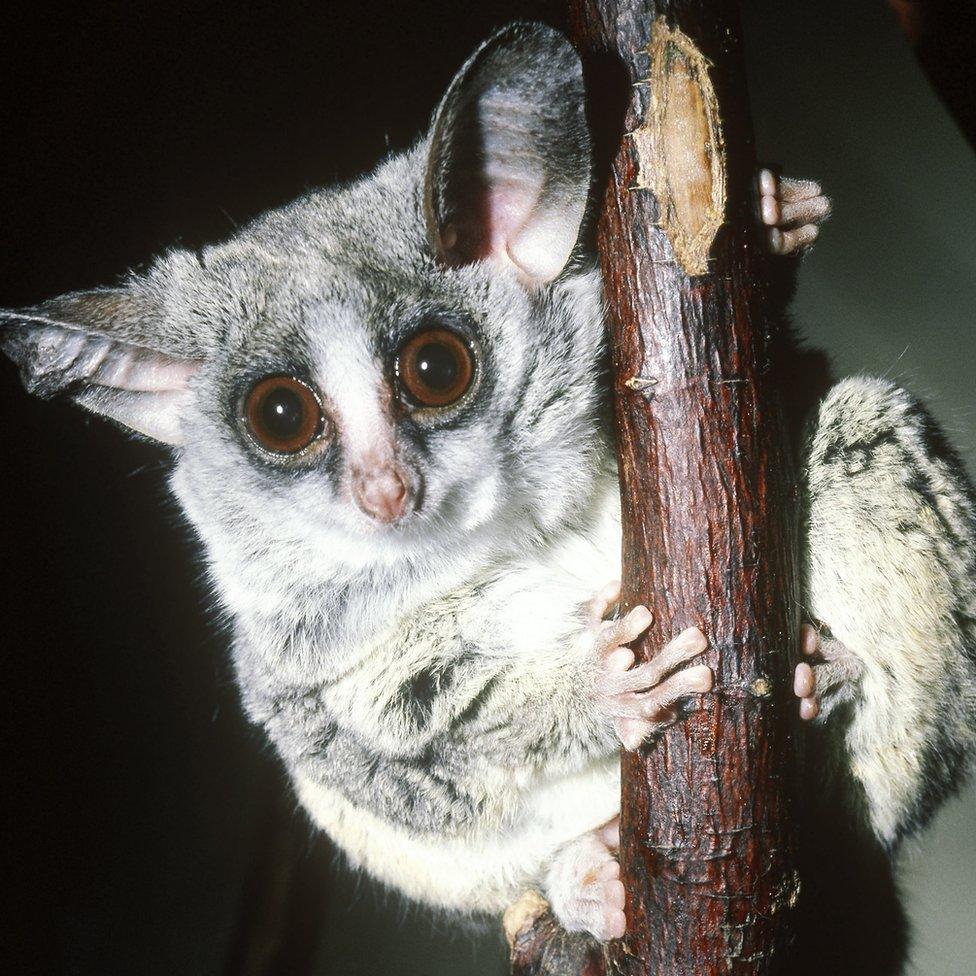Jumping robot inspired by bush babies
- Published
Scientists in California have built an extremely agile robot
Scientists in the US have unveiled an athletic robot which takes its inspiration from bush babies.
Salto the robot can perform multiple vertical jumps in a row - making it a champion robot athlete.
Bush babies, or galagos, can jump five times in four seconds, to reach a combined height of 8.5m.
Writing in Science Robotics, external, the researchers say the prototype could be used for search and rescue in disaster zones.
The bush baby (Galago senegalensis) is a nocturnal primate native to Africa. It has the unusual ability to store energy in its tendons, enabling it to jump to heights not achievable by its muscles alone.
Duncan Haldane and his colleagues at the University of California, Berkeley, describe the bush baby's special skill as "vertical jumping agility".
To compare robots and animals, the roboticists developed a new metric to measure vertical agility.
This is defined as the height something can reach with a single jump in Earth gravity, multiplied by the frequency with which that jump can be made.

The robot mimics the way the bush baby, or galago, stores energy in its tendons
Their robot is 26cm tall and weighs 100g. A motor drives a spring, which loads via a leg mechanism to create the kind of crouch seen in the bush baby.
Salto mimics the way energy is stored in the tendons of the nocturnal mammal, which means it doesn't need to wind up before a jump. As soon as it leaps, the robot is ready to go again.
With a vertical jumping agility of 1.75 metres per second (m/s), Salto was able to achieve 78% of the bush baby's score; the mammal has a jumping agility of 2.24 m/s.
However, the Californian-built robot was able to beat a bullfrog on the same metric.
"By combining biologically inspired design principles with improved engineering technology, matching the agile performance of animals may not be that far off," said co-author Prof Ronald Fearing.
The research has been backed by the US Army Research Laboratory, external among other funders.
Follow Paul on Twitter., external